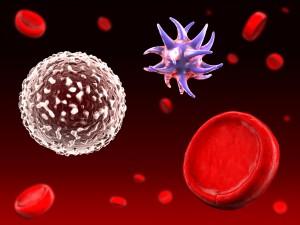 A new study published in the journal PLOS One, entitled ““Sentinel” Circulating Tumor Cells Allow Early Diagnosis of Lung Cancer in Patients with Chronic Obstructive Pulmonary Disease“, has made an important progress in the field of early diagnosis of invasive cancers.
A new study published in the journal PLOS One, entitled ““Sentinel” Circulating Tumor Cells Allow Early Diagnosis of Lung Cancer in Patients with Chronic Obstructive Pulmonary Disease“, has made an important progress in the field of early diagnosis of invasive cancers.
Lung cancer (both small and non-small cell) is the second most common form of cancer, accounting for approximately 13% of all new cancers. It accounts for about 27% of all cancer mortalities, making it the leading cause of cancer-related death. The American Cancer Society’s estimates for lung cancer in the United States for 2014 are of about 224,210 new cases each year, with an estimated 159,260 deaths every year. For smokers the risk is much higher, while for non-smokers the risk considerably diminishes. Survival statistics in people with lung cancer vary depending on the stage (extent) of when the cancer is diagnosed. Studies in animal samples have shown that invasive tumours shed cancer cells into the bloodstream from the very earliest stages of their formation, even before imaging can identify tumours.
In a monocentric interventional, observational prospective study of patients with Chronic Obstructive Pulmonary Disease (COPD), a team of researchers from Inserm led by Dr. Paul Hofman (University of Nice, France), used a blood test that isolates all types of tumour cells from the bloodstream without any loss, and a standard diagnostic imaging test. A total of 245 subjects were enrolled in this research. Among these subjects, 168 had COPD and 77 did not, including 42 smokers without any detectable pathology and 35 healthy non-smoking individuals.
At the time of inclusion in the study, COPD patients did not have symptoms of clinically detectable lung cancer or other malignancies. Using the blood test, circulating cancer cells were identified in 5 patients (3%), whereas imaging did not show any nodules in the lungs. In these 5 patients lung cancer was diagnosed at an early stage (IA) allowing prompt surgical resection; they were then shown to be without circulating tumor cells (CTCs) and to be tumor recurrence-free at 16 months after surgery.
In this study, a nodule became detectable 1-4 years after detection of circulating cancer cells by the blood test. Patients immediately underwent surgery, and analysis of the nodule confirmed the diagnosis of lung cancer. Patient monitoring for a minimum of one year after surgery showed no signs of recurrence in all 5 subjects, leading researchers to determine the cancer had been eradicated. At the same time, no nodules were detected during monitoring of subjects who did not have circulating cancer cells, and no cancer cells were detected in the bloodstream of “control” subjects without COPD.
Researchers concluded that it is possible to detect, in patients at risk of developing lung cancer, early signs in the form of circulating cancer cells, several months, and in some cases several years, before the cancer becomes detectable by imaging.
To increase the reliability of these findings larger studies are necessary. Furthermore, to test the predictive validity of these tests, follow-up studies are needed. However, these encouraging findings suggest that early detection of these circulating cells via blood analysis could play an important role in early surgical intervention, enabling effective eradication of the primary cancer site.


